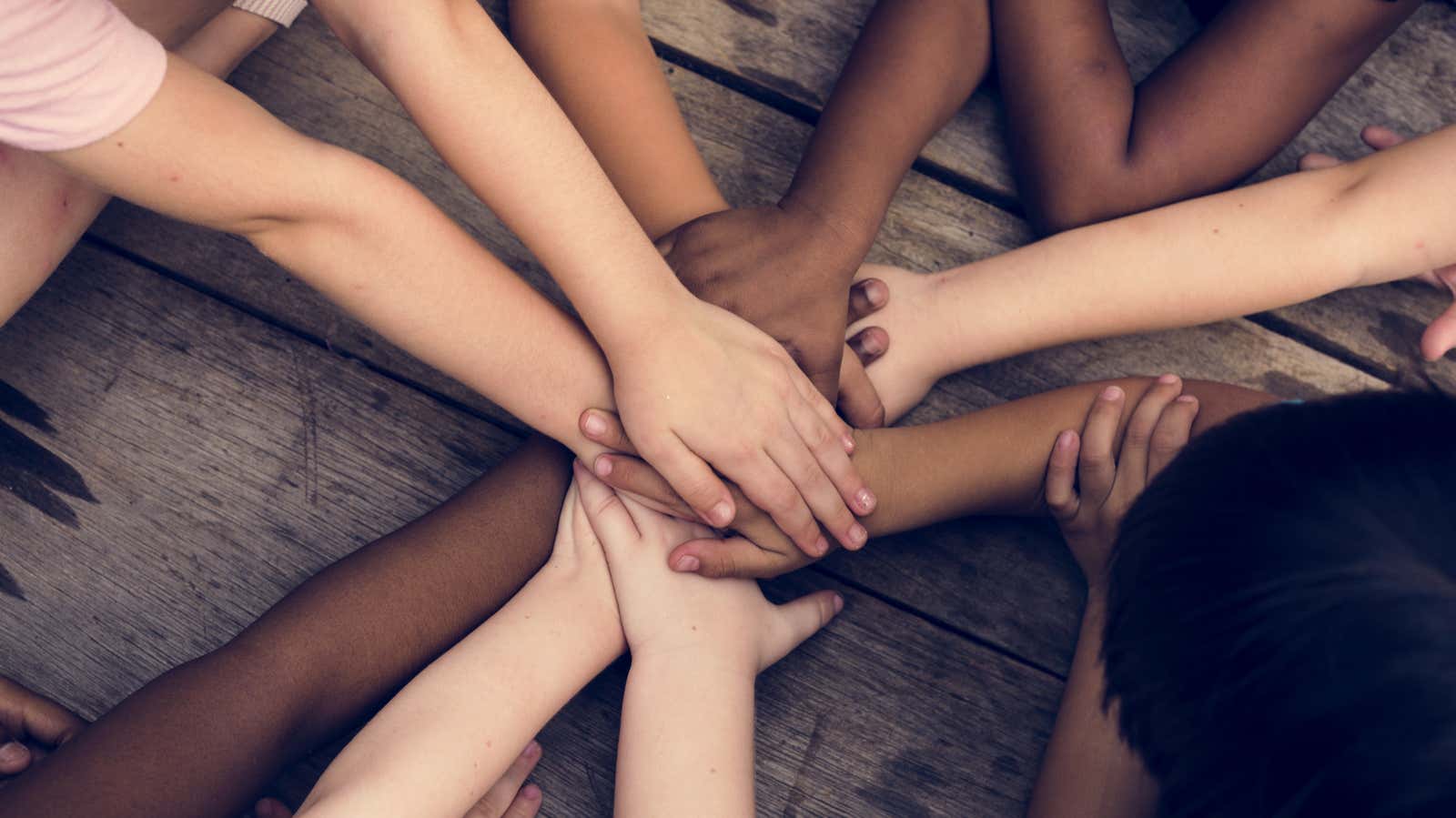Children Are Not Race-Blind

The idea of ”color blindness” when it comes to race is certainly not new. You’ve probably heard this; you might have thought about it; maybe you even said it, “Oh, I can’t see the color; I only see this person. ” When it comes to children, we have a desire to see them innocent – and they are – and that this innocence, this purity, means that they are also color blind. But this is not the case. And that’s not bad.
To begin with, admitting that someone is of a different race is often no more difficult than admitting that someone is of a different gender. The latter no more makes a person sexist than the former makes him racist. At least not in essence. People are simply programmed to compare and contrast – and to reach out to those who are more like us than they are different .
By about age five (according to research ), children begin to show social preferences for people of their own race. You cannot choose what you cannot identify, consciously or subconsciously.
What’s more, people – including human children – love to categorize. Dividing people into categories helps us understand where we are in the world. Do you remember high school? Secondary school? Remember “nerds”, “athletes” and “popular guys”? Remember how children of similar interests, talents, ages and, yes, races gravitated towards each other? We feel familiar with people who are like us, behave like us, and have similar life experiences. It’s not wrong, but it’s true .
If we don’t talk to our kids about race, they’ll just go ahead and figure it out on their own. They don’t necessarily need our help with this; There is a whole big world right outside our door that is ready and willing to intervene if we do not talk to our children – about race in general or about the latent racist sentiments in this country in particular. They express their own opinion; they will decide for themselves whether a stereotype is more than a stereotype.
In fact, even with our help, children will look beyond their families to learn about the wider world around them. Erin Winkler, Researcher and Assistant Professor in the Department of Africa, cites the work of Lawrence Hirschfeld in her article Children are Not Color-Blind: How Young Children Learn to Race :
He argues that children are motivated to learn and conform to broader cultural and social norms that help them function in society. To assess these “social norms”, children must gather information from a wide variety of sources, not just their own families. He uses an example of accents to illustrate his point. If children looked only or even primarily at their parents when studying behavior and norms, then one would expect that children who are not native speakers of the language will assimilate the accent of their parents. Instead, children acquire the normative emphasis of the region in which they grow up.
Where do you want your children to learn the bulk of “community norms” right now? From you and society? Or just society?
Part of the problem is that even when children point out to us that they see differences in race, that they are interested in it, we suppress it. Beverly Daniel Tatum, president emeritus of Spelman College in Atlanta and author of Why Do All Black Kids Sit Together in the Cafeteria ?: And Other Talks of Race , sets out this hypothetical scenario for us in the Washington Post :
A small white child accompanies his parents to the grocery store when he spots someone who is not like the people he has seen before. So he turns to his parents and says, perhaps too loudly, “Why is this man so dark?”
In this situation, parents’ first instinct is usually suppressed shshshshshshshshshshshshshshshshshshshshshshshshshshshshshshshshshshshshshshshshshshshshshshshshshshshshshshshshshshshshshshshshshshshshshshshshshshshshshshshshshshshshshshshshshshshshshshshshshshshshshshshshshshshshshshshshshshshshshshshshshshshshshshshshsh, and is not a “no explanation”, – says Tatum. “The child makes an observation, the parent in a hurry silences the child, and he says,” You shouldn’t notice, and there is probably something wrong with what you just shouted. “
Maybe they will never bring this up again, and we can pat ourselves on the back for bringing up color blind people. But did we just teach them color blindness? Or did we just teach them that it’s embarrassing to admit the difference? This is what Tatum calls not color blindness, but the silence of color .
Regardless, even if we – and our children – can live our lives unaware of racial differences, I look back this week and see no calls from black Americans to ignore race. They don’t want white people to be color blind. In fact, the opposite is true. They practically beg white people to see them: their pain, their fear, their exhaustion. As one woman of color writes for Everygirl :
“I see no color” has also been used as the button for the nuclear bomb in discussions of inequality or injustice. However, the process of eliminating one person’s anxiety simultaneously drowns out the voices of black and brown people in conversation.
Refusing to engage in dialogue about race will not solve the problems we face – it will only perpetuate them.
Children really see colors. They see the race. And if we want something to change for the better, we need to talk to them about it so that they can grow up not just color-blind and non-racist , but so that they can be anti-racist .
Looking for ways to protect black lives? Check out this list of resources .